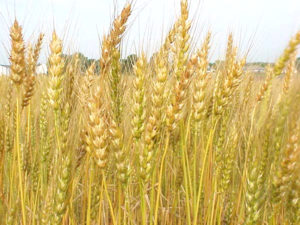 Grain futures declined on Friday, soybeans lost ground after the US Department of Agriculture announced its forecasts that US farmers will plant a record amount of the oilseed in the 2014-15 season, which begins in April-May.
Grain futures declined on Friday, soybeans lost ground after the US Department of Agriculture announced its forecasts that US farmers will plant a record amount of the oilseed in the 2014-15 season, which begins in April-May.
On the Chicago Board of Trade, soybeans futures for settlement in March lost 0.13% to trade at $13.5588 per bushel by 13:44 GMT. Prices touched a session high at $13.5962 per bushel, while day’s low was hit at $13.5388 per bushel. The grain settled last week 0.5% higher, after adding 3.7% in the previous 5-day period. However, the oilseed has lost 8.5% in 2013.
According to the annual USDA forecasts released yesterday, US soybeans area will increase by 3.9% to a record 79.5 million acres or 32.2 million hectares in the 2014-15 season. The chief economist of the agency announced that the average price of the grain will probably average $9.65 during the season, due to the expected bigger crop, which will be down from average price of $12.70 in 2013-14 season.
“The forecast of higher soybean plantings in the U.S. puts pressure on prices,” said Vanessa Tan, an investment analyst at Phillip Futures Pte, in a Bloomberg interview. The planting season in the US usually starts in April or May.
However, losses were limited as the recent prolonged drought in Brazil, the largest exporter of the grain, may have harmed crops.
DTN.com reported on February 20 that rainfall is still needed to support filling corn and soybeans in southern Brazil’s key growing areas of Rio Grande do Sul, after the prolonged period of hot and dry weather conditions. The latter diminished soil moisture and probably harmed some of the corn and soybeans crops. Showers in Parana and Sao Paulo may favor filling crops, but will hinder early harvests of maturing crops.
Meanwhile, soybeans and corn producing regions in Argentina will benefit from adequate to surplus soil moisture, except some areas where recent heavy storms have caused serious flooding. Scattered showers and thundershowers today and on Thursday will maintain soil moisture and will be beneficial for most of the crops, the website reported.
Elsewhere on the grains market, corn futures for March delivery lost 0.62% to trade at $4.5362 a bushel by 13:44 GMT. Futures hit a session high at $4.5638 per bushel, the strongest since September 30, while day’s low was touched at $4.5338 per bushel. Corn has advanced 7.3% this year after it lost nearly 40% in 2013, the steepest annual drop on record and the worst annual performance since at least 1959.
Wheat touches a two-month high
On the Chicago Board of Trade, wheat futures for settlement in March fell 0.22% to trade at $6.1425 per bushel by 13:44 GMT. Prices touched a session high of $6.1738 per bushel, while day’s bottom was touched at $6.1412.
The grain settled last week 4.1% higher, the biggest gain since the period ended September 27. However, wheat slumped 22% last year, marking the largest annual decline since 2008, on expectations for a record global output of 712.7 million tons, according to data by the US Department of Agriculture.
DTN’s February 20th forecast called for a new storm system to leave first rain, which will later change into snow, accompanied by strong winds over the Midwest. Warm weather and rain may melt the protective snow cover in the soft red winter wheat areas of the Midwest, after which the cold temperatures that follow may harm some crops.
Meanwhile, the website reported that in the Southern Plains a return to colder weather is expected in the north and east US region in the next six-to-ten-day period. The cold air will probably remain outside the Plains’ wheat belt, but should be watched closely.





